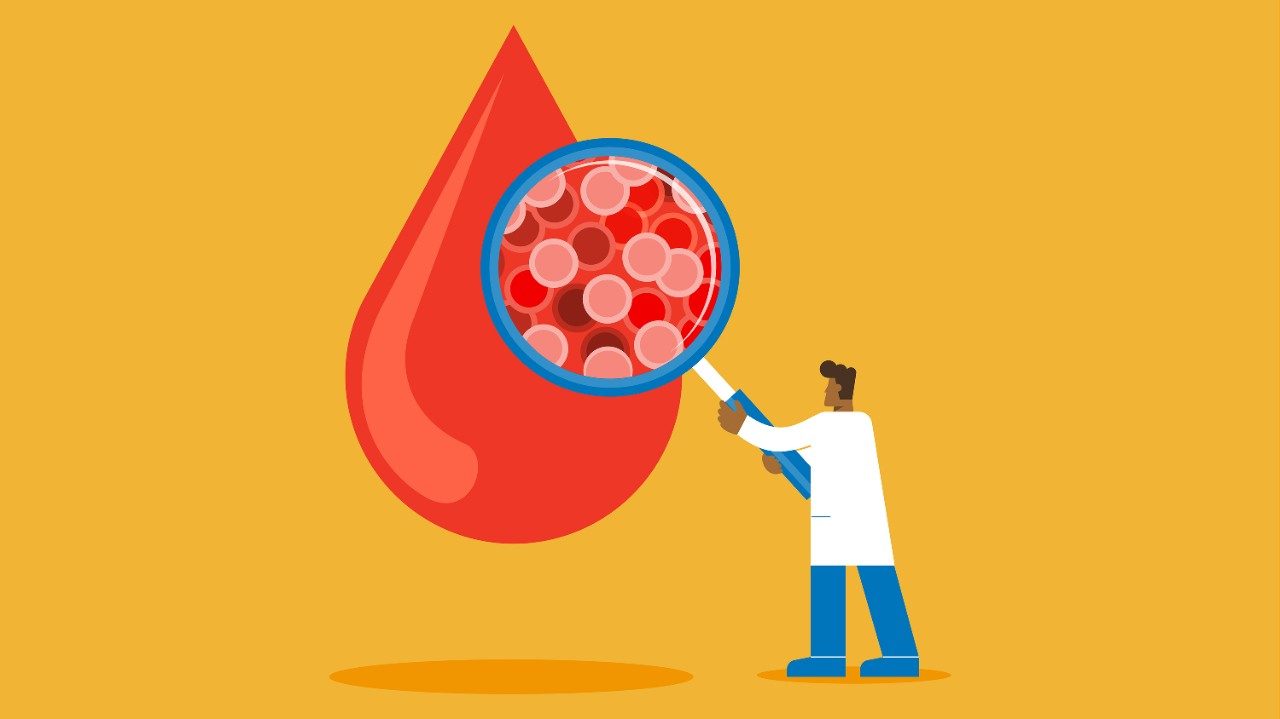Regular cancer screening exams
Cancer screenings are medical tests done when you are healthy, with no signs of illness. They help find cancer early, when the chances for successfully treating the disease are greatest. Regular cancer screening exams, based on gender and age, are recommended for breast, cervical, colorectal and prostate cancer. Learn more about when you should start and how often you should get the following tests.
Screening exams for people with symptoms or risk factors
Regular screening exams are not recommended for the cancer types below. But if you have symptoms, or you think you may be at increased risk for any of these cancers, talk to your doctor about getting tested.
10 cancer symptoms women shouldn't ignore
If you’re a relatively healthy young woman, cancer may not even be on your radar yet. But it should be, regardless of your age or family history.
Why? Because each year, more than 375,000 women in the United States are diagnosed with breast cancer or ductal carcinoma in situ (DCIS). Another 106,000 are diagnosed with gynecologic cancers, such as endometrial cancer, ovarian cancer or cervical cancer. And while most of these diagnoses occur after menopause, gynecologic cancers can strike women at any age.
“Your risk for all types of cancer rises as you get older,” says Therese Bevers, M.D., medical director of the Lyda Hill Cancer Prevention Center.
Why it’s important to stay alert
The signs of many gynecologic cancers can be vague and very similar to those of other conditions. Only breast cancer and cervical cancer can be detected through screening.
So, it’s important to recognize cancer symptoms and talk about them quickly with your gynecologist or primary care doctor. This can increase your odds of finding cancer early, when it’s most treatable.
“Sometimes, the signs are very subtle,” notes Bevers. “But if you know what to watch for, you can tell your doctor about them right away.”
Here are 10 potential cancer symptoms that every woman should be aware of.
1. Abnormal vaginal bleeding
More than 90% of women diagnosed with post-menopausal endometrial cancer experience irregular vaginal bleeding. It’s also one of the most common symptoms of cervical cancer. So, see a doctor if you experience any of the following:
- Before menopause: bleeding between periods or bleeding during or after sex
- After menopause: any bleeding at all, including spotting
2. Changes in your breasts
Most palpable breast cancers are detected by women themselves during routine daily activities, such as bathing, shaving or even scratching. So, practice breast self-awareness and be alert for any lumps in your breast or armpit. Also, be on the lookout for any unusual discharge, changes in your breasts’ appearance or skin texture, and abnormalities of the nipple, such as retraction or scaling.
3. Unexplained weight loss
Talk to your doctor if you suddenly lose more than 10 pounds without changing your diet or exercise habits.
4. Bloody vaginal discharge
Bloody, dark or smelly vaginal discharge is usually a sign of infection. But sometimes, it’s a warning sign of cervical, vaginal or endometrial cancer.
5. Constant fatigue
A busy week can wear anyone out. But in most cases, a little rest should cure your fatigue. See a doctor if your fatigue is becoming severe or constant, especially if it’s interfering with your work or leisure activities.
6. Loss of appetite or feeling full all the time
Appetite changes can be symptoms of both ovarian cancer and those unrelated to the reproductive system. If you notice you’re eating a lot less than usual but still feeling full quickly, talk to a doctor.
7. Persistent indigestion or nausea
Usually, persistent indigestion and nausea are related to conditions like stomach ulcers or acid reflux. But sometimes, these can signal a gynecologic cancer. Play it safe, and see a doctor if you feel queasy more often than usual.
8. Pain in the pelvis or abdominal area
Ongoing abdominal pain or discomfort — including gas, indigestion, pressure, bloating and cramps — is usually due to gastrointestinal issues. They can be caused by normal hormonal fluctuations during your menstrual cycle, too. But sometimes, they are a sign of ovarian or endometrial cancer. So, see a doctor if yours lasts for more than two weeks.
9. Frequent urination or pelvic pressure
Suddenly need to urinate all the time or feeling constant pressure on your bladder? Odds are, you’ve got a urinary tract infection. But if your doctor has already ruled that out, you’re not pregnant, and you haven’t been drinking more fluids, this could be a sign of a gynecologic cancer.
10. Changes in your bowel habits
If you start noticing changes in the size, shape or frequency of your bowel movements, don’t just dismiss them. These could be a sign of a tumor pressing on the colon and distorting your stool. Talk to your doctor if you start experiencing diarrhea or constipation when you never have before, too.
Having one or more of these symptoms doesn’t necessarily mean you have cancer. But it’s important to get them checked out if you notice them.
“Most cancers are asymptomatic at their earliest stages,” notes Bevers. “So, be sure to get any screenings available at the recommended intervals, and mention any symptoms you might be having to your doctor, especially if they last more than two weeks.”
Request an appointment at MD Anderson online or call 1-877-632-6789.
6 ways to cope with scanxiety
If medical tests like scans, biopsies or bloodwork cause you anxiety, you’re not alone. It’s common to feel stress or worry before medical tests, during these tests and even afterward when you are waiting for the results.
These feelings have a name: scanxiety.
When it comes to cancer screening, diagnostic tests and follow-up scans, scanxiety may be particularly intense.
But there are things you can do to cope with scanxiety. Use these tips to help manage your anxiety before your next medical test.
Maintain a routine
So much about cancer is beyond our control. And when life feels out of control, we often feel anxious and overwhelmed.
“One way to take back control is through your routine,” says Traci Newsom, a senior social work counselor.
Stick to a sleep schedule, eat regularly, make time for physical activity, and reach out to friends and family.
Prepare for your medical tests
The most difficult part of scanxiety is the unknown. Do some research on what to expect during your scan or test. Learning how to prepare properly can make the process go much more smoothly.
For instance, if you’re getting a mammogram, wearing a two-piece outfit means you won’t have to disrobe completely. And getting all the facts on colonoscopy prep means you are less likely to have to repeat the test.
Take small steps to stay healthy and distract yourself
Rather than focusing on your upcoming tests or the unknown results, set small, achievable goals that you can accomplish in an hour or a day.
“Large goals take a lot of energy and focus, and when you’re feeling stressed out, you don’t have that kind of energy,” says Newsom. “But small goals that are doable can be a nice distraction from anxiety and worry, and give you a sense that you still have some control.”
Maybe you can set a goal to walk for 15 minutes each day around your neighborhood, or start a gratitude journal and write for 20 minutes each day.
“If you try to do too much, it can make you feel defeated and frustrated,” says Newsom. “But small projects like cleaning out a junk drawer, or even simply calling a friend, can give you a boost.”
Find ways to stay connected
Feeling alone and isolated can fuel scanxiety, so it's important to remain in touch with others. When you can, make plans to get together in person with friends and family for fun activities or schedule phone dates with them to catch up.
Cancer patients and caregivers also can take advantage of the online support groups offered at MD Anderson. There are several groups for patients and caregivers, and some groups focus on more general topics like eating healthy and exercising.
You can also find someone to talk to through myCancerConnection, MD Anderson’s cancer support community.
What are multi-cancer early detection (MCED) tests, and should you get one?
Multi-cancer early detection (MCED) tests offer the potential to detect a range of cancers through a simple blood test.
MCED tests, a type of liquid biopsy, aim to catch early-stage cancer cells long before symptoms appear. By utilizing machine-learning algorithms, these tests identify the likely origin of tumors based on DNA and protein profiles.
But are these tests reliable?
“MCED tests hold immense promise for revolutionizing cancer detection,” says Ernest Hawk, M.D., vice president, Cancer Prevention and Population Sciences. “However, it’s important to be aware of the potential consequences if you’re thinking about using one.”



